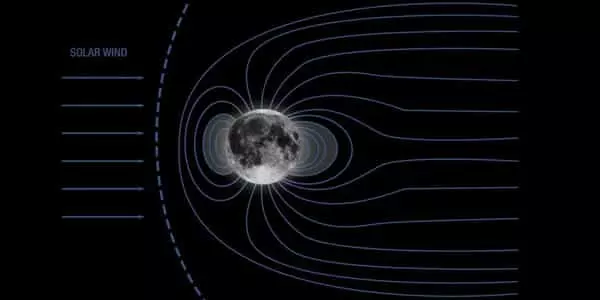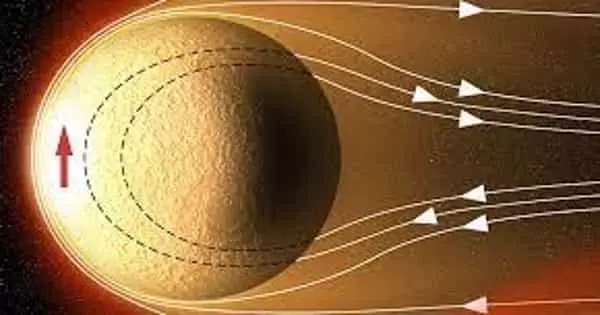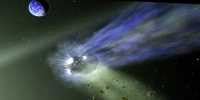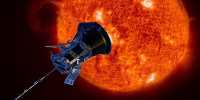Magnetization may result from impacts of objects such as meteors, rather than magnetization caused by the presence of a magnetic shield, according to tests of glass samples collected on Apollo missions. NASA’s Artemis mission, a follow-up to the Apollo missions of the 1960s and 1970s, will send astronauts to the moon in 2024, ushering in a new era of space exploration. One of the most important questions that scientists hope to answer is what resources are found in the moon’s soil and how those resources might be used to sustain life.
Researchers at the University of Rochester, working with colleagues from seven other institutions, report their findings in a paper published in the journal Science Advances on a major factor that influences the types of resources that may be found on the moon: whether or not the moon has had a long-lived magnetic shield at any point in its 4.53 billion-year history.
The presence or absence of a shield is significant because magnetic shields shield astronomical bodies from harmful solar radiation. Furthermore, the team’s findings contradict some long-held assumptions.
“This is a new paradigm for the lunar magnetic field,” says first author John Tarduno, the William R. Kenan, Jr., Professor of Geophysics in the Department of Earth and Environmental Sciences and dean of research for Arts, Sciences & Engineering at Rochester.
Tests of glass samples gathered on Apollo missions show magnetization may result from impacts of objects like meteors, not as a result of magnetization from the presence of a magnetic shield.
Did the Moon Ever Have a Magnetic Field?
Tarduno has been a pioneer in the field of paleomagnetism for many years, studying the evolution of Earth’s magnetic shield to better understand planetary evolution and environmental change. The magnetic shield that protects Earth originates deep within the planet’s core. There, swirling liquid iron generates electric currents, which power a phenomenon known as the geodynamo, which creates the shield. The magnetic shield is invisible, but scientists have long recognized that it is critical for life on Earth’s surface because it protects us from solar wind, which is streams of radiation from the sun.
But has Earth’s moon ever had a magnetic shield?
While the moon currently lacks a magnetic shield, there has been speculation that the moon may have had a longer magnetic shield at some point in its history. “There has been this idea since the Apollo missions that the moon had a magnetic field that was as strong or even stronger than Earth’s magnetic field around 3.7 billion years ago,” Tarduno says.
The belief that the moon had a magnetic shield was founded on a 1970s dataset that included analyses of samples collected during the Apollo missions. The analyses revealed that the samples were magnetized, which the researchers attributed to the presence of a geodynamo.
However, a couple of factors have caused researchers to reconsider. “The moon’s core is really small, and it would be difficult to actually drive that kind of magnetic field,” Tarduno says. “Furthermore, previous measurements of a high magnetic field were not carried out using heating experiments. Other techniques were used, which may have resulted in an inaccurate recording of the magnetic field.”

When Lunar Samples Meet Lasers
Tarduno and his colleagues tested glass samples collected on previous Apollo missions, but they used CO2 lasers to heat the lunar samples for a short period of time, allowing them to avoid altering the samples. They then used highly sensitive superconducting magnetometers to more precisely measure the magnetic signals in the samples.
“One of the problems with lunar samples has been that the magnetic carriers in them are very susceptible to change,” Tarduno says. “By heating with a laser, there is no evidence of change in our measurements, so we can avoid the problems that people may have experienced in the past.”
The magnetization in the samples was determined to be the result of impacts from objects such as meteorites or comets, rather than magnetization caused by the presence of a magnetic shield. Other samples they examined had the potential to exhibit strong magnetization in the presence of a magnetic field but did not exhibit any magnetization, indicating that the moon has never been protected by a magnetic shield for an extended period of time.
“If there had been a magnetic field on the moon, all of the samples we studied should have acquired magnetization,” Tarduno says. “That pretty much proves that the moon did not have a long-lasting dynamo field.”
Lack of Magnetic Shield Means an Abundance of Elements
Without the protection of a magnetic shield, the moon was vulnerable to solar wind, which may have resulted in the incorporation of a variety of volatiles (chemical elements and compounds that can be easily evaporated) into the lunar soil. These volatiles could include carbon, hydrogen, water, and helium 3, a helium isotope that is rare on Earth.
“Our data suggests that we should be looking at the upper end of helium 3 estimates because a lack of magnetic shield means that more solar wind reaches the lunar surface, resulting in much deeper reservoirs of helium 3 than people previously thought,” Tarduno says.
Based on data collected by the Artemis mission, the research could help inform a new wave of lunar experiments. Scientists and engineers will be able to study the presence of volatiles in samples collected during the mission to better determine if these materials can be extracted for human use. Helium 3, for example, is currently used in medical imaging and cryogenics and could be used as a fuel source in the future.
Because of the lack of magnetic shielding, ancient lunar soils may contain records of past solar wind emissions. Analyzing soil cores could thus provide scientists with a better understanding of the sun’s evolution.
“With the context provided by our research, scientists can better plan the next set of lunar experiments to conduct,” Tarduno says. “These experiments may concentrate on current lunar resources and how we might use them, as well as the historical record of what is trapped in lunar soil.”














